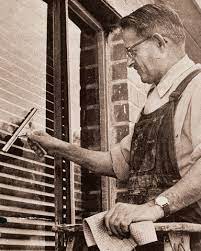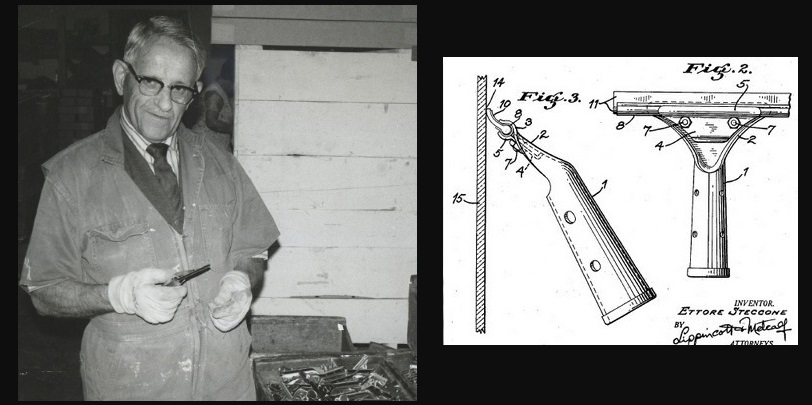Who invented the window cleaner?
Italian immigrant Ettore Steccone (1896-1984) liked to keep the windows in his house clean. When it moved to America in 1922, heavy and cumbersome tools were used to clean glass.

In 1936 Steccone applied for a patent for the wiper he had discovered, and his patent was approved in 1938. However, Steccone was seen as an uneducated Italian immigrant, and attempts to sell his invention to dealers were fruitless. Thereupon, he contacted other window cleaners he knew. Steccone suggested that they try the windshield wiper for a day. Its simplicity and ergonomic design instantly impressed window cleaners, and the Steccone family made a lot of money in a short time.

Ettore Steccone was born in a small mountain village in Northern Italy in 1896 and came to the US for the first time in 1922 after serving in the Italian Army during WWI. He came to seek his fortune and chose window cleaning as his profession. He became a fixture around town riding his Indian motorcycle with a ladder on his shoulders and a bucket dangling from its end.
The squeegee has been making life easier for window cleaners ever since, and its design has hardly changed over a long period of time. The material that makes this invention different from other window wipers is the rubber on the product. Even the smallest possible defects on the tire leave marks on the glass.
The window cleaner looks like a T-shaped device with a rubber tip along its front edge.
One of the largest and most well known suppliers of window cleaning tools at that time was the J. Racenstein Company located in New York City. Ettore took his product to them and they summarily rejected it. This time however, Ettore made a wager with the owner. He bet him the best hat in New York City, that within one month the J. Racenstein Company would come begging to buy his revolutionary new squeegee.
With that bet in mind, Ettore began giving away his new squeegee to all his fellow window cleaners asking them just to try it out for one day on the job to see if they didn’t agree that his tool was far superior to anything that they were currently using. His marketing plan worked. Window cleaners soon started asking where they could purchase Ettore’s new squeegee and he happily told them to contact the J. Racenstein Company.
Ettore continued to manufacture and ship products from his garage until 1954 when he and his five employees moved into his first real factory. Things did not always run smoothly for this hard working, determined man. The loss of his patent, the infringement of his name, world conflicts which caused metal shortages and delays to the production of his squeegee; all things which would possibly defeat other men, served only to make Ettore persevere. His NEW DEAL took on a new name and became the ETTORE Master, a name that was to become known throughout the world.
